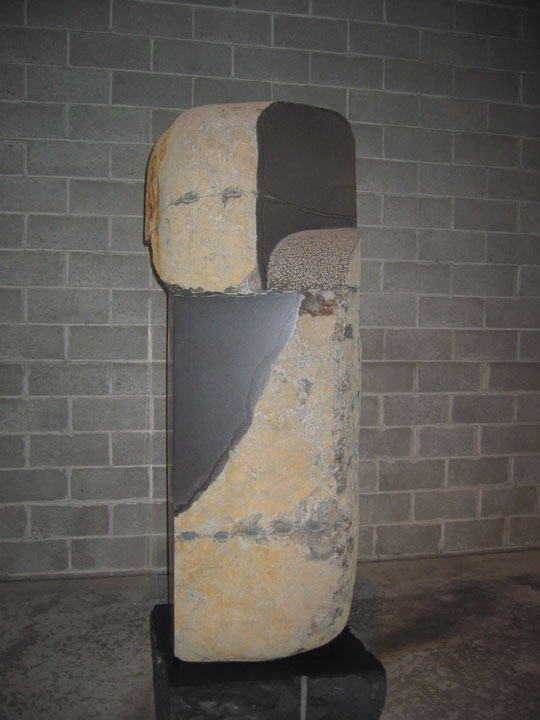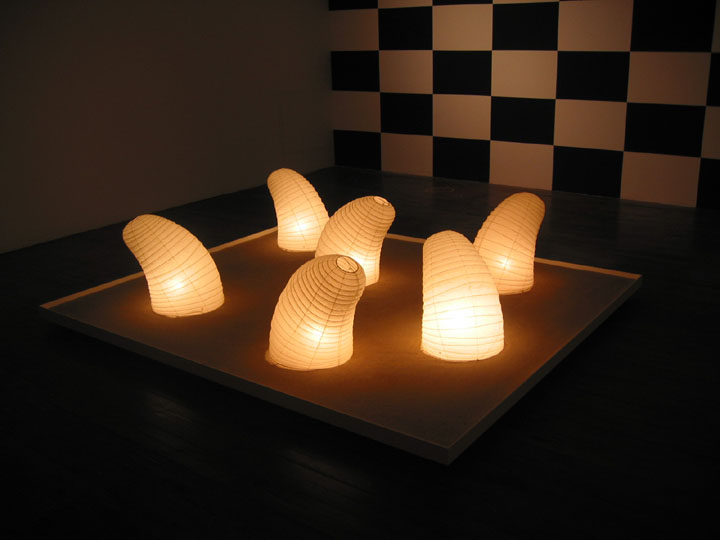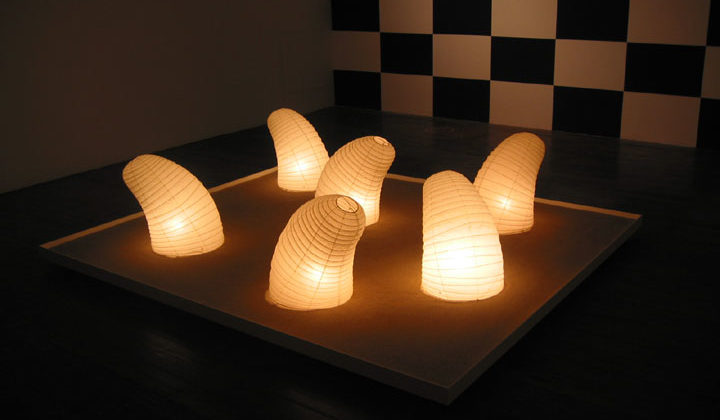The Guggenheim currently has an exhibit called The Third Mind which features American Artists who contemplated Asia, from 1860 to 1989, with a special commission of a work by Ann Hamilton that circles the rotunda, spiraling down from the top of the spiral to the floor. The Guggenheim website has a short interview with Ann Hamilton in the video on the page about the exhibition. She insightfully asks “How do we dwell in the imaginative space that’s made not just because we understand where it comes from but it’s how it meets where we are here?” The “it” in this case is the source of ideas, behaviors, and forms that have been transmitted to us, in many ways, through time and across space. Thus, Hamilton’s piece, called “Human Carriage,” includes a “bell carriage” that is periodically launched by a young woman called “The Reader.” The carriage glides along an aluminum track affixed to the Guggenheim’s defining spiral and the four small Tibetan bells ding as they strike external clappers on the way. The sound is delicate, but captures the attention of the crowds milling about in the lobby. And then the sound dissipates, only to recur at another interval. Ethereal raw silk waves from the carriage, so that the piece includes movement in several ways, sound, visuals, and various textures. When the carriage arrives at the base, it triggers the release of a collection of sliced texts that have been waxed into bundles, which drops into a pile as the day progresses. Hamilton commented about textual sources being a significant means for the transmission of ideas, and I like how she chopped up books to indicate, at the very least, how concepts are changed, distorted, reshaped in the transmission process. This is a hard work to describe because it is multi-dimensional and transitory, but you can watch the video and get some idea. I visited with my friend Carol and she mentioned that when the lobby is crowded and everyone is spellbound, watching the carriage descend, the excitement in the Guggenheim is palpable. Everyone clapped when the bundled books dropped, she reported.
On this same trip to New York City, I visited the Isamu Noguchi Museum for the first time. It’s in Long Island City and is a total treat. Noguchi’s work is also featured in the Guggenheim show. By now (March 2009), the garden at the Noguchi Museum should be open after a restoration–so I will have to go back! The Akari light sculptures and the basalt sculpture are undoubtedly complemented by the works in the garden, which was closed when I was there.


Akari light sculptures by Noguchi

